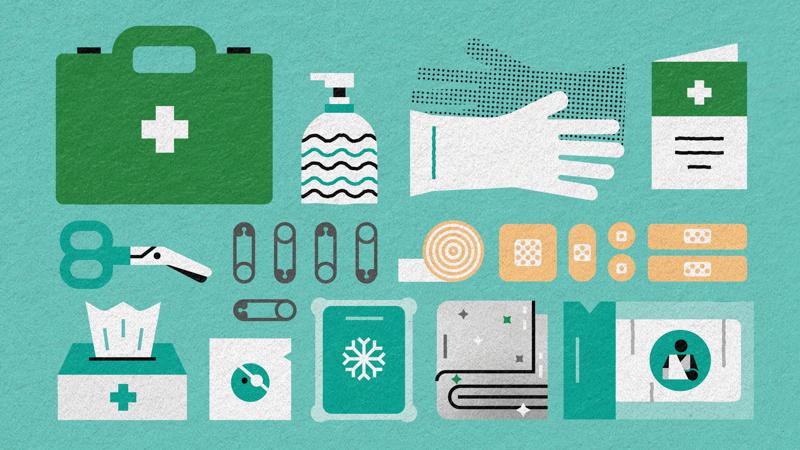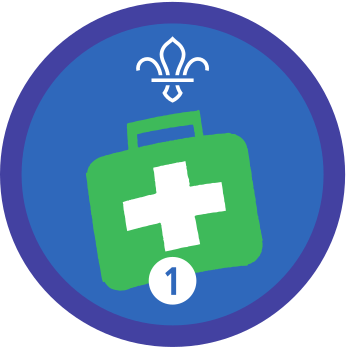
Be an emergency aider: burns
You’ll need
- Chairs
- Access to water (optional)
Before you begin
- Make sure the person leading the activity knows about first aid. Someone from your group or local area with a first aid certificate could take charge, or you could reach out to places that help provide first aid training or support, for example, St John Ambulance or the British Red Cross.
- You’ll need enough leaders for the activity, including enough people who are happy to demonstrate first aid techniques.
- Adults should only demonstrate and practise first aid on other adults; young people should only demonstrate and practise first aid on other young people. Adults and young people should never demonstrate or practise first aid on each other.
- Remember that this activity touches on topics that might be sensitive for some people. Give everyone the opportunity to step away if they need to compose themselves.
This could be for a number of reasons including things that people may have experienced. Make sure they have a space to go to or someone to talk to if they need it. If needed, have a look at our information on bereavement.
- Place the chairs in a semi-circle facing the person leading the activity and ask everyone to sit down.
Learn what to do
- Have a quick chat with everyone about what they already know about minor burns or scalds. Explain what they are, when they might happen, and the signs and symptoms.
You can find more information about burns and scalds on the St John Ambulance website, or below.
- Show everyone how to treat a minor burn or scald, using another adult as the casualty. Explain what you’re doing every step of the way.
- Everyone should share what they already know about severe burns. Explain what they are, how they’re different from minor burns, when they might happen, and the signs and symptoms.
You can find more information about serious burns on the St John Ambulance website, or below.
- Show everyone how to treat a severe burn or scald, using another adult as the casualty. Explain what you’re doing every step of the way.
- Have a quick re-cap with everyone on how to deal with shock.
Check out the Be an emergency aider: circulation activity or the treating shock guidance on the St John Ambulance website.
- Everyone should split into groups of three young people. One person should be the first aider, one person should be he casualty, and the third person should watch and help. They should practise treating burns, swapping roles so that everyone has a turn at being the first aider. Make sure some adults walk around so they can help if anyone’s finding it tricky.
For detailed and up-to-date information, check out the St John Ambulance website.
Burns are caused by dry heat (such as fire or irons) while scalds are caused by wet heat (such as steam or hot drinks). The longer the burning goes on for, the more severe the injury will be.
Signs and symptoms include:
- red skin and swelling
- pain in the area of the burn
- blistering may start to appear
Treating minor burns or scalds is all about cooling the burn as quickly as possible, usually by holding it under cool running water for at least 10 minutes.
For detailed and up-to-date information, check out the St John Ambulance website.
Burns and scalds are caused by damage to the skin when it comes into contact with heat. People with severe burns may also develop shock, a life-threatening condition.
Signs and symptoms include:
- pain
- areas of superficial, partial thickness and/or full thickness burns
- superficial burns affect the outer layer of the skin and may look red and tender
- partial thickness burns also affect the outer layer of the skin, but the skin becomes red and raw, and blisters may form
- a full thickness burn affects all layers of the skin and can cause damage to nerves, tissues, muscles and blood vessels
- difficulty breathing
- signs of shock
Treating severe burns or scalds is all about cooling the burn as quickly as possible by holding it under cool running water for at least 10 minutes, helping the casualty to sit or lie down, and calling 999 for emergency help.
Reflection
This activity helped people to develop skills. It also needed everyone to be responsible. Both minor and severe burns are treated by cooling the affected area down. Why do people think this is important? It stops the burn doing more damage. Why is it important to stay calm when treating someone for a burn? The good news is that lots of burns can be avoided. When do people think burns are most likely to happen? People could think about hazards in different scenarios, like at home or on camp. What measures could people put in place to reduce the likelihood of burns and keep everyone safe?
Safety
All activities must be safely managed. You must complete a thorough risk assessment and take appropriate steps to reduce risk. Use the safety checklist to help you plan and risk assess your activity. Always get approval for the activity, and have suitable supervision and an InTouch process.
If anyone can’t reach their casualty, or is unable to do things like holding an area under cold running water, they can still learn so they can instruct others. They may want to get into a group of four, so they can tell a fourth person what to do to help the casualty.
All Scout activities should be inclusive and accessible.
Put people’s skills to the test by creating some scenarios in your meeting place. Once groups enter, they’ll need to do a primary survey to work out what they need to do. You could also combine the skills people learned in this activity with other emergency aid skills and organise an incident hike.
Young people with first aid qualifications could help others if they’re struggling, with a leader supervising.
